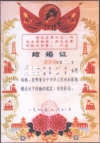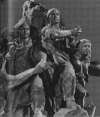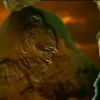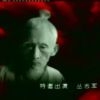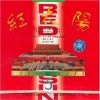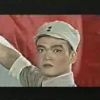Chapter 4: The Foolish Old Man who Moved the Mountains
For one year the schools were closed. We did not really learn anything. Then, teaching materials changed, everything became rather more revolutionary. There were lots of readings by Mao: his words, his poems, the Three Articles. We would memorize this every day. (China Historian, 1957–)
We had to learn the Three Articles by heart. They are quite good, as Mao’s writings, anyway, are good, there is nothing to be compared with them, which is why, during the Cultural Revolution, when you had to listen to and discuss his latest instructions, that was actually quite useful, we all liked it. (Beijing Taxi Driver, 1958–)
Reading the Three Articles is like reading the Bible—you can really think about this comparison—or it is like a Buddhist recitation. You were expected to emulate Bai Qui’en (Norman Bethune) and his behavior. Just like Jesus, he served as a model for us. All these social movements the Communists initiated could have been religious movements as well. (Playwright, 1956–)
The Three Articles influenced me very much. Did I believe them? Well, what Zhang Side did is really admirable—not easy, to be sure [非常不容易 feichang bu rongyi]. The same with Bai Qiu’en, helping the fighting Chinese—that is really quite impressive! I am still struck and influenced even now. This kind of spirit [精神 jingshen] is really special: he came and helped China, yes, that is really admirable. (Guqin Player, 1940s–)
In Charles Fitzgerald’s words, Mao’s writings had by the mid-1970s “become to his own people in his own age what the Sayings of Confucius [i.e., the Analects] were to the Chinese people for the past two thousand years: the source of inspiration and guidance in matters social, political and moral” (1976, 1). Already in November 1965, Mao himself had compared what would later be known as his Little Red Book or Quotations from Chairman Mao Tsetung (毛主席语录) to the short and terse works attributed to Laozi and Confucius (Leese 2006, 127). The very choice of title for this selection—“recorded words” (语录 yulu), a genre originally associated with Buddhist and especially Chan Buddhist masters, the latter of which detested the written word but left a recorded oral legacy—is telling.
Mao thus styles himself into a producer of “recorded words” not unlike those from that early tradition, thus becoming a modern-day sage. An ironical illustration of how powerful this claim apparently was is the new Little Red Book sold in the 1980s: it looked precisely like its predecessors from the Cultural Revolution, complete with shiny red plastic cover and golden engraved characters. Yet the text it contained was different: the golden characters do not read “Recorded words of Chairman Mao” (毛主席语录) but “Sayings of Confucius” (论语, for a photo see Barmé 1996, 86). In the minds of those who produced this Little Red Book for the 1980s, then, Mao’s words held an authority quite comparable to that of the Confucian Classics in traditional China.
It is the purpose of this chapter to illustrate that the treatment of the canonic classical philosophical heritage in traditional China as discussed in Chapter 3 does not differ all that much from the handling of an equally canonic modern philosophical heritage in the form of Mao Zedong Thought in revolutionary China. Indeed, one could argue that quoting Mao constituted a ritual act, not unlike quoting the classical sages had in ancient times when, in Kern’s analysis, “quotation [was] the textual equivalent to ancestor worship” (2005, 295). Much of what can be observed in terms of quotation practice during the Cultural Revolution (and before and after) points in a similar direction (May 2008). Even while new uses of Mao Zedong Thought before, during, and after the Cultural Revolution may have constantly and continually changed its meaning, it maintained some of its most essential characteristics, and, most importantly, its authoritative, canonical power.
Chapter 4 discusses the before- and afterlife of one piece of Mao Zedong Thought, the “Story of the Foolish Old Man Who Moved Mountains” which became part of the so called lao sanpian 老三篇, the Three Constantly Read Articles and which was also cited in Mao’s Little Red Book. As an almighty panacea the story, the Three Articles and the Little Red Book could be found on numerous propaganda posters, in songs, and in the literature of the time. One could live without food or drink but not without Mao's words, so it was said. Many a hero in Cultural Revolution lore would ask for his “precious Red Book” in difficult moments: the story of a self-sacrificing Party Secretary, who, ill with ulcers, fainted and, upon waking up, first demanded his “precious Red Book,” is a typical example. As the story goes (CL 1970.7:3–18 “A Party Branch Secretary,” 16–17.)
“Upon being handed … the most valuable book in the world, Chao smiled. He gazed happily at the picture of Chairman Mao, inside, and his lips formed the words: “Chairman Mao. Chairman Mao!””
After his visit to China in 1967, the Italian novelist Alberto Moravia (1907–90) even declared that there were no books in China except the Little Red Book, “which every Chinese carries about with him, to which he refers in all circumstances, which he knows almost by heart and where he looks, never doubting that he will find it, for the answer to any question which is not immediately obvious to him.” (Huang 1968, 3) Indeed, the Little Red Book has a most astonishing publishing history, with publication figures that approach those of the Three Character Classic or the Bible (Leese 2006, 122; Huang 1968, 1).
In the first years of the Cultural Revolution some printing houses would disrupt their work on other publications in order to meet the quota of production for the Little Red Book and other works by Mao (Huang 1968, ii). Up until Lin Biao’s death in September 1971, the Little Red Book had been translated into thirty-six languages, including Braille script, and it had been published in official versions in the dozens of billions within China and in the hundreds of millions abroad. Additionally, some 440 local editions have been distinguished (Leese 2006, 122). Everybody in China during those years was able to (and probably also did) possess at least one copy of this “precious book.”









